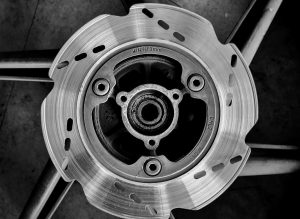Extreme weather conditions can wreak havoc on your car, impacting its appearance, performance, and longevity. Whether it’s blistering heat, freezing cold, heavy rain, or hailstorms, your vehicle needs extra care to withstand the elements. By adopting a few simple strategies, you can ensure your car stays in great shape no matter what Mother Nature throws at it.
Protecting Your Car in Extreme Heat
Scorching temperatures can be tough on your car, both inside and out. To minimize sun damage, park in shaded or covered areas whenever possible. This prevents your interior from overheating and protects your paint from fading. If shade isn’t available, a reflective windshield sunshade can reduce interior temperatures significantly. For additional protection, use a car cover to shield your car from harmful UV rays and dust.
Heat can also strain your car’s battery, causing it to lose its charge more quickly. Regularly inspect your battery during summer months, checking for corrosion on the terminals and ensuring the connections are tight. If your battery is nearing the end of its lifespan, consider replacing it before the peak heat arrives to avoid unexpected breakdowns.
Staying Safe During Rain and Storms
Rain and storms introduce the risk of water damage and reduced visibility. Keeping your wiper blades in top condition is essential. If they leave streaks or don’t clear water effectively, replace them promptly. Clean and functioning headlights and taillights are equally important for visibility, ensuring you and other drivers stay safe on wet roads.
Flooding can cause severe damage to your car. Avoid parking in low-lying areas prone to water accumulation, and never drive through flooded streets, as water can enter your engine. If you’re uncertain about the depth of water on the road, it’s safer to find an alternate route or wait until conditions improve.
Preparing for Freezing Temperatures and Snow
Winter weather brings its own set of challenges. Protecting your engine and fluids is a top priority in freezing temperatures. Using the correct antifreeze and keeping it topped up prevents your engine from freezing. For outdoor parking, an engine block heater can make starting your car easier during frigid mornings.
Snow and ice can damage your car’s exterior and undercarriage. Regular washing is key, especially to remove road salt and chemicals that can cause rust over time. Applying a coat of wax before winter begins provides an additional barrier against these harsh elements.
Your tires are critical for safe driving in snowy conditions. Cold temperatures can cause tire pressure to drop, so check and adjust it regularly. For areas with heavy snow or ice, switching to winter tires ensures better traction and control on slippery roads.
Protecting Against Hail and High Winds
Hailstorms can cause dents and cracked windows, so it’s crucial to be proactive. When hail is forecasted, park in a garage or use a thick, padded car cover designed for hail protection. If you’re caught on the road during a hailstorm, find shelter, such as an overpass or a covered parking area, to minimize damage.
High winds can also pose risks by blowing debris like branches or rocks into your car. To protect your vehicle, avoid parking near trees or other potentially hazardous objects during windstorms.
Safeguarding Your Car’s Interior
Extreme weather doesn’t just affect the exterior of your car—your interior needs care too. In both hot and cold conditions, use seat covers and floor mats to protect against wear and tear. Rubber mats are especially useful during winter, catching snow and mud to prevent moisture from seeping into the carpet.
The Importance of Regular Maintenance
Regardless of the weather, regular maintenance is your car’s best defense against damage. Check your fluids, battery, brakes, and tires periodically, especially before a major change in seasons. Identifying and addressing small issues early can save you from costly repairs in the future.
Final Thoughts
Extreme weather conditions can be challenging, but with proper preparation and care, you can protect your car and ensure it performs reliably year-round. From parking in shade during summer to switching to winter tires in snowy conditions, these simple strategies will keep your car safe, efficient, and ready to tackle whatever the weather throws at you.













